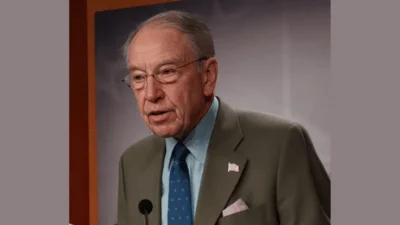The Congressional Record is a unique source of public documentation. It started in 1873, documenting nearly all the major and minor policies being discussed and debated.
“INTRODUCTION OF THE RURAL LOCAL BROADCAST SIGNAL ACT OF 2000” mentioning the U.S. Dept of Agriculture was published in the Extensions of Remarks section on pages E109 on Feb. 10, 2000.
The publication is reproduced in full below:
INTRODUCTION OF THE RURAL LOCAL BROADCAST SIGNAL ACT OF 2000
______
HON. BOB GOODLATTE
of virginia
in the house of representatives
Thursday, February 10, 2000
Mr. GOODLATTE. Mr. Speaker, I rise today with my colleague from Virginia, Congressman Rick Boucher, to introduce crucial legislation that will have a significant impact on the lives of millions of Americans, especially those who live in smaller cities and towns, on farms and throughout rural areas. This legislation will ensure that community information such as local weather forecasts, natural disaster alerts, and local government announcements reach those who needed it most.
Our legislation, entitled the Rural Local Broadcast Signal Act, would accomplish these goals by authorizing the Rural Utilities Service, an agency of the U.S. Department of Agriculture, to provide loan guarantees to entities that can obtain the private funding to launch technologies that will provide local TV signals over satellite in the medium sized and smaller TV markets. Through these loan guarantees, the RUS will continue its mission of promoting economic development and improving the lives of rural Americans while fulfilling the original intention of legislation enacted last November--to enable all Americans to receive their local television signals over satellite.
I was proud to be a member of the conference committee on the recently enacted Intellectual Property and Communications Omnibus Reform Act of 1999, which included language to allow direct broadcast satellite providers to immediately begin retransmitting local television broadcast signals into the broadcast station's area, subject to a retransmission consent agreement negotiated with each station carried. This new law allows satellite providers to become more effective competitors to cable operators, who have been able to provide local over-the-air broadcast stations to their subscribers for years. It will also benefit American consumers in markets where local TV via satellite is made available by offering them full service digital television at an affordable price.
More importantly, these consumers will benefit from local news, weather reports, information such as natural disasters or community emergencies, local sports, politics, and election information, as well as other information that is vital to maintaining the integrity of communities across the country.
Local TV via satellite is already available to satellite subscribers in America's twenty largest television markets. In these markets DirecTV and Echostar, the existing satellite ``platform providers,'' have begun retransmission of affiliates of the ABC, CBS, NBC, and FOX broadcast networks. DirecTV and Echostar have also announced their intention to begin retransmission of local TV stations in an additional twenty or thirty television markets over the next 24 months. Ultimately, the two existing satellite ``platform providers'' will provide local TV via satellite to households in most, if not all, of the 50 largest television markets in the United States.
However, there are 211 markets in the United States and in excess of 100 million U.S. TV households. There, if matters are left solely to the initiative of the existing satellite ``platform providers,'' more than 50 percent of existing satellite subscribers (over 6 million households) will continue to be deprived of their local TV stations; more than 60 percent of existing commercial television stations (over 1,000) will NOT be available via satellite; and more than 30 million US TV households will remain beyond the reach of local TV via satellite.
Put another way, local TV via satellite will not be available in 27 states and in parts of nearly every state.
So while the law enacted last fall has eliminated the legal barriers to delivery of local TV via satellite, it alone will not assure delivery of local TV via satellite to the majority of local TV stations and satellite subscribers. For that reason, and because many folks in parts of my district and in the districts of most members on this Committee cannot receive their local signals any other way, I am joining with Rick Boucher, JoAnn Emerson, and over 100 Members of the House in supporting this legislation to assure that all Americans, not just those in profitable urban markets, can receive their local TV signals over satellite.
____________________








